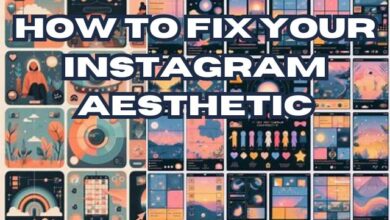Instagram vs Reality: 5 Astonishing Ways Social Media Transforms Self-Image, for Better and Worse

In the digital age, social media platforms have become a significant part of our daily lives. Among these platforms, Instagram stands out with its visually appealing content and user-friendly interface. However, it’s essential to understand that the world portrayed on Instagram often differs from reality.
This article aims to delve into the concept of ‘Instagram vs Reality’ and explore its impact on self-image.
Instagram, with its millions of users worldwide, is a platform where people share snapshots of their lives. But how often do these snapshots reflect the reality of their lives? And more importantly, how does this disparity affect our perception of ourselves?
These are some of the questions we will explore in this article. Remember, the aim is not to demonize Instagram or social media but to promote a healthier and more realistic approach to its usage.
The Rise of Instagram
Instagram, launched in 2010, has rapidly become one of the most popular social media platforms globally. Its unique focus on visual content, primarily photos and videos, sets it apart from other platforms. Instagram’s user-friendly interface and various features like filters, stories, and reels have contributed to its immense popularity.
The platform is particularly popular among the younger generation, with a significant portion of its user base comprising teenagers and young adults. This popularity can be attributed to the appeal of sharing and viewing visually appealing content, connecting with friends, and following celebrities and influencers.
However, it’s crucial to remember that the content shared on Instagram often represents the ‘highlights’ of people’s lives rather than their everyday reality. This disparity between ‘Instagram life’ and real life is where the concept of ‘Instagram vs Reality’ comes into play. As we delve deeper into this article, we will explore how this ‘Instagram vs Reality’ phenomenon impacts our self-image and perception. You can read more about it on Siegmannstock’s website.
Instagram vs Reality
In the world of Instagram, everything seems perfect. Pictures are often carefully staged, lighting is adjusted, and filters are applied to create the ‘perfect’ image. This is the ‘Instagram’ side of the ‘Instagram vs Reality’ concept. However, these images often do not represent the full reality of the person’s life. They are snapshots, moments of perfection amidst the chaos of everyday life.
The ‘Reality’ side of ‘Instagram vs Reality’ is that life is not always picture-perfect. There are ups and downs, successes and failures, good days and bad days. However, these aspects of life are often not represented on Instagram. The platform has become a highlight reel of people’s lives, showcasing their best moments and achievements, while the struggles and ordinary moments are left unseen.
This disparity between ‘Instagram’ and ‘Reality’ can lead to unrealistic expectations and comparisons, which we will discuss in the next section.
The Impact of Instagram on Self-Image
In the ‘Instagram vs Reality’ context, the impact on self-image can be profound. Constant exposure to ‘perfect’ images can lead to unhealthy comparisons, often resulting in feelings of inadequacy and low self-esteem. This is particularly true among younger users, who are still forming their identities and self-perceptions.
Several studies have shown a correlation between heavy Instagram use and increased levels of anxiety, depression, and dissatisfaction with one’s appearance or body. This is the darker side of the ‘Instagram vs Reality’ phenomenon. It’s important to remember that the images on Instagram are often carefully curated and edited representations of people’s lives, not their complete reality.
However, it’s not all negative. In the next section, we will explore the positive impacts of Instagram and how it can be used as a tool for self-expression and inspiration, despite the ‘Instagram vs Reality’ debate.
The Positive Side of Instagram
While the ‘Instagram vs Reality’ phenomenon can have negative impacts, it’s also important to acknowledge the positive side of Instagram. The platform provides a space for creativity, self-expression, and connection with others. It can be a source of inspiration, with numerous accounts dedicated to art, photography, fashion, fitness, cooking, and more.
Moreover, Instagram can be a platform for positive change. Many influencers and organizations use Instagram to spread awareness about important issues, promote body positivity, and challenge the ‘Instagram vs Reality’ narrative. They share ‘behind-the-scenes’ content, discuss their struggles, and emphasize the importance of mental health, thereby promoting a more realistic and healthy use of the platform.
Learn the seamless process of “How to Switch to a Professional Account on Instagram” to unlock advanced features and take your social media presence to the next level.
However, it’s crucial to approach Instagram with a critical eye and remember that what we see on the platform is often a curated version of reality. In the next section, we will conclude our discussion on ‘Instagram vs Reality’ and suggest ways to foster a healthier relationship with social media.
Read More: How to Tag People on Your Instagram Story After You Post It
Conclusion
In the ‘Instagram vs Reality’ debate, it’s clear that Instagram has both positive and negative impacts on self-image. While it can distort our perception of reality and lead to feelings of inadequacy, it can also be a platform for creativity, self-expression, and positive change.
The key is to remember that Instagram is a highlight reel, not a complete picture of someone’s life. It’s important to approach the content we see on Instagram with a critical eye and not compare our behind-the-scenes with someone else’s highlight reel.
In conclusion, while the ‘Instagram vs Reality’ phenomenon is a complex issue, we can foster a healthier relationship with social media by being mindful of its impacts, questioning what we see, and using it as a tool for positivity and inspiration rather than a source of comparison and self-doubt.
Frequently Asked Questions (FAQs)
1. What is the ‘Instagram vs Reality’ phenomenon?
The ‘Instagram vs Reality’ phenomenon refers to the disparity between the images people post on Instagram and their real lives. Instagram photos are often carefully staged, edited, or filtered to present an idealized version of reality, which can lead to unrealistic expectations and comparisons.
2. How does Instagram affect self-image?
Instagram can significantly impact self-image, particularly among younger users. The constant exposure to ‘perfect’ images can lead to unhealthy comparisons, often resulting in feelings of inadequacy and low self-esteem. Several studies have shown a correlation between heavy Instagram use and increased levels of anxiety, depression, and dissatisfaction with one’s appearance or body.
3. Are all images on Instagram edited or staged?
Not all images on Instagram are edited or staged. However, it’s common for users to enhance their photos with filters or editing tools to make them more appealing. It’s also common for users to stage photos to create a particular aesthetic or mood.
4. Can Instagram have a positive impact?
Yes, Instagram can have a positive impact. It provides a platform for creativity, self-expression, and connection with others. Many users find inspiration on Instagram, and it can be a tool for positive change, with many influencers and organizations using the platform to spread awareness about important issues.
5. How can I use Instagram in a healthier way?
To foster a healthier relationship with Instagram, it’s important to remember that the images you see are often a curated version of reality. Avoid comparing your life to the lives you see on Instagram. Use the platform as a source of inspiration and creativity, rather than a source of comparison. It can also be helpful to limit your time on the platform and follow accounts that make you feel good about yourself.
6. What can parents do to help their children navigate Instagram?
Parents can play a crucial role in helping their children navigate Instagram. Open communication about the ‘Instagram vs Reality’ phenomenon is key. Parents can encourage their children to critically evaluate the images they see on Instagram and remind them that these images do not always reflect reality. It’s also important for parents to monitor their children’s Instagram use and encourage healthy social media habits.
7. Are there any resources available for those struggling with self-image issues due to Instagram?
Yes, there are many resources available for those struggling with self-image issues due to Instagram. These include mental health organizations, counseling services, and online resources that provide advice and support. If you or someone you know is struggling, it’s important to seek help from a mental health professional.




